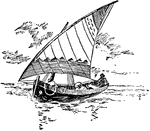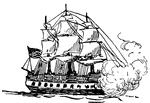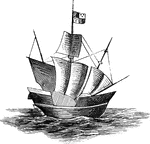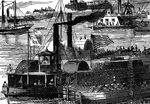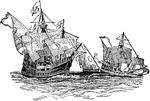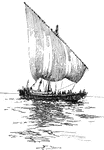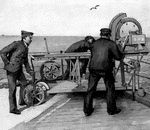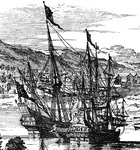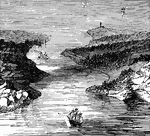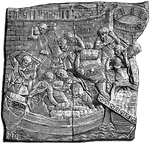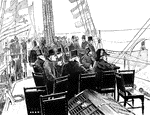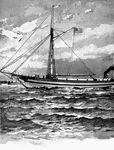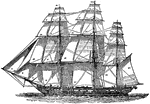
Ship Sails
A piece of cloth or tissue of some kind spread to the wind to impel or assist in impelling a vessel…
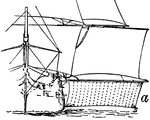
Save-All, or Catch-All
"A small sail set under another, or between two other sails, to catch or save the wind." —Whitney,…
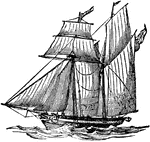
Schooner Ship
A small fast-sailing sharp-built vessel with two mass, and the principals sails of the fore-and aft…

Second Naval Battle
"Second naval battle in Hampton Roads- fight between the Federal ironclad Monitor, of two guns,…
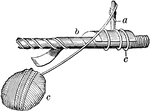
Serving Mallet
"A semicylindrical piece of wood, fitted with a handle...used for convenience in serving ropes...to…

Ship Building
An image of a ship being built in Spain during the 1400's before Columbus' exploration.
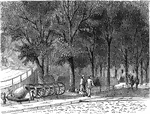
Brooklyn Shipyard
Brooklyn Navy Yard is an American shipyard, located 1.7 miles (2.7 km) northeast of the Battery on the…
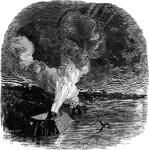
Siege of Island
"Siege of Island No. 10, on the Mississippi River- night bombardment by the Federal mortar boats, ten…
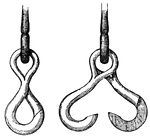
Sister Hooks - Closed and Open
"Nautical, one of a pair of hooks working on the same axis and fitting closely together: much used about…

Port of Skala on the Island of Patmos
View of the Skala harbor on Patmos. It is on this island that John received his visions recorded in…
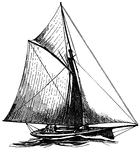
Sloop
"A small fore-and-aft rigged vessel with one mast, generally carrying a jib, fore-staysail, mainsail,…

Snotter
"A becket fitted round a boat's mast with an eye to hold the lower end of the sprit which is used to…
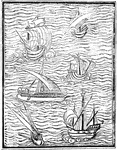
Spanish Vessels
This representation of the vessels of the early Spanish navigators is a fac-simile of a cut in Medina's…
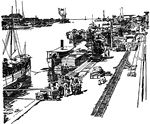
Pasig River
Shipping docks at Pasig River, Manila in the Philippines during the Spanish-American War.

St. Louis
"The American Line Steamship St. Louis, launched from the Cramps Docks, November 12, 1894."—E.…
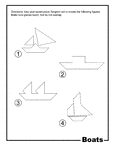
Boats Outline Tangram Card
Outlines of boats (sailboat, ship, yacht) made from tangram pieces. Tangrams, invented by the Chinese,…
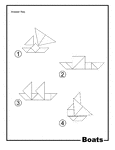
Boats Outline Solution Tangram Card
Solutions for outlines of boats (sailboat, ship, yacht) made from tangram pieces. Tangrams, invented…
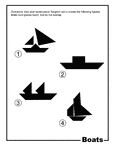
Boats Silhouette Tangram Card
Silhouette outlines of boats (sailboat, ship, yacht) made from tangram pieces. Tangrams, invented by…
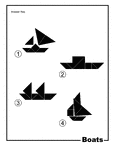
Boats Silhouette Solution Tangram Card
Solutions for silhouette outlines of boats (sailboat, ship, yacht) made from tangram pieces. Tangrams,…
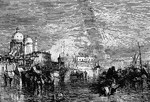
Venice from the Canal of the Giudecca
This painting by J. William Turner is one of many canal drawings the artist did. The piece was exhibited…

The Spanish Man-of-War Tornado Chasing the American Steamer "Virginius"
American steamship being chased by Spanish man-of-war.

Warsow Sound
"Reconnoissance of Warsaw Sound, December 5th, 1861, by a detachment of gunboats under Captain Rodgers,…

Burning of the White House
"Burning of the White House- the Federal troops, by command of General McClellan, abandoning their position…
Burning of the White House
"Burning of the White House- the Federal troops, by command of General McClellan, abandoning their position…

Combat at Yazoo River
"Desperate naval combat between the Confederate iron-plated ram Arkansas and the Federal gunboat…


